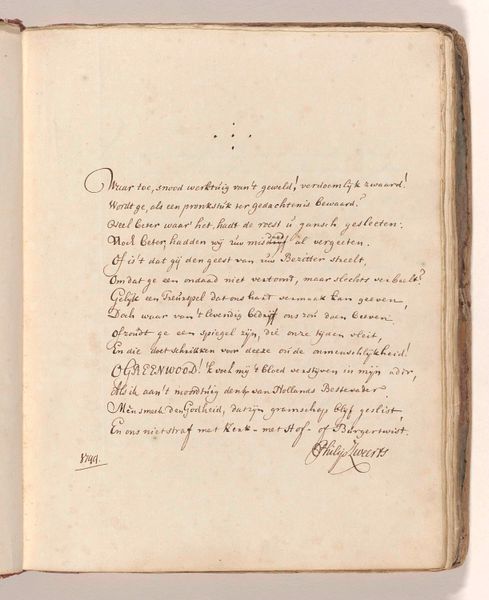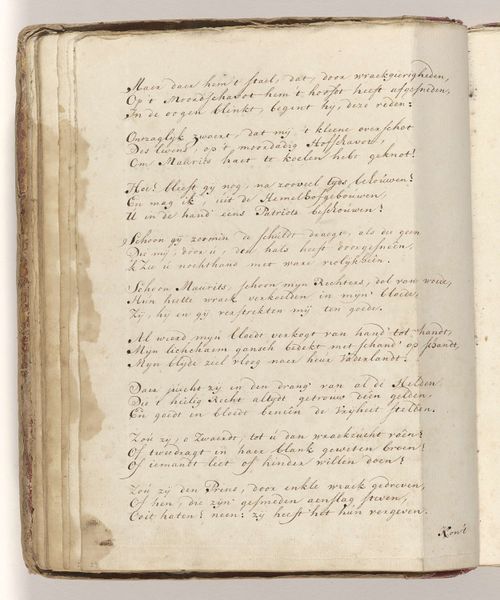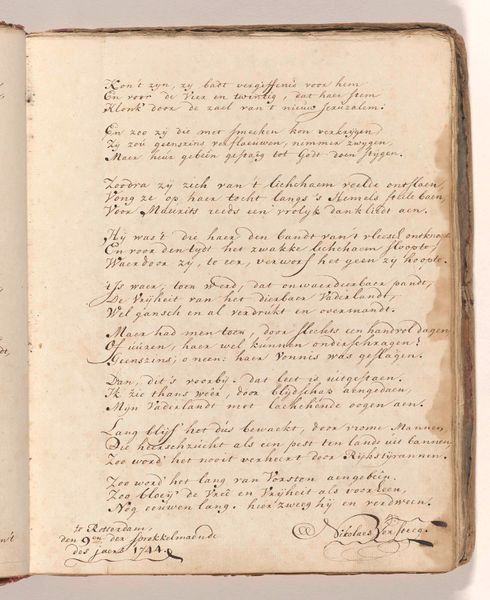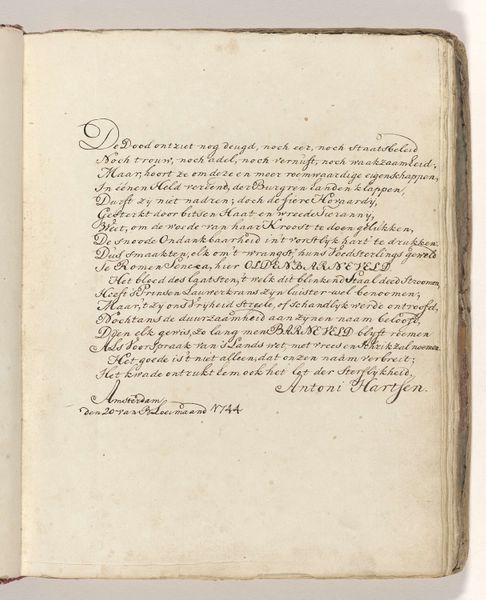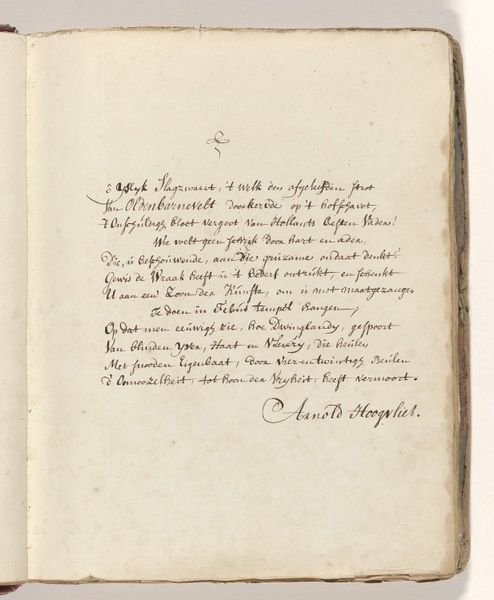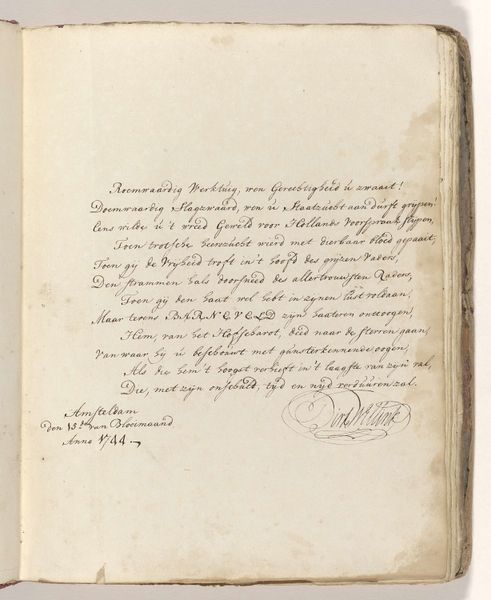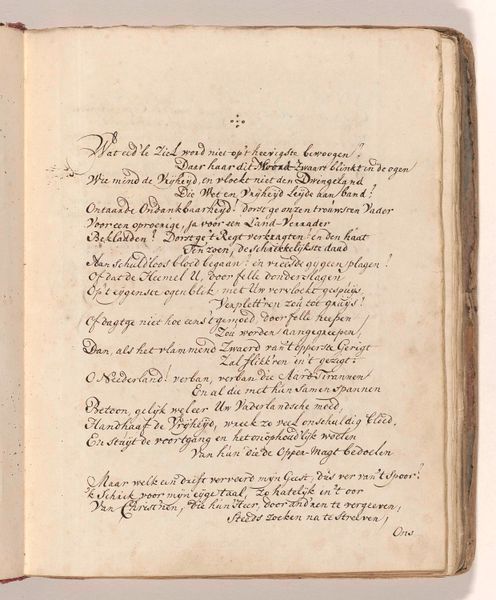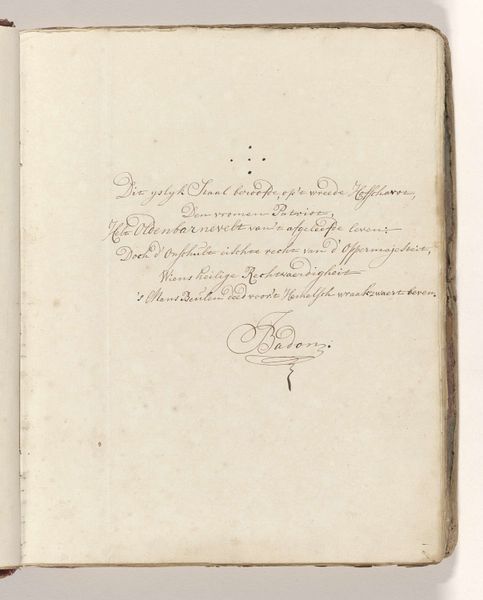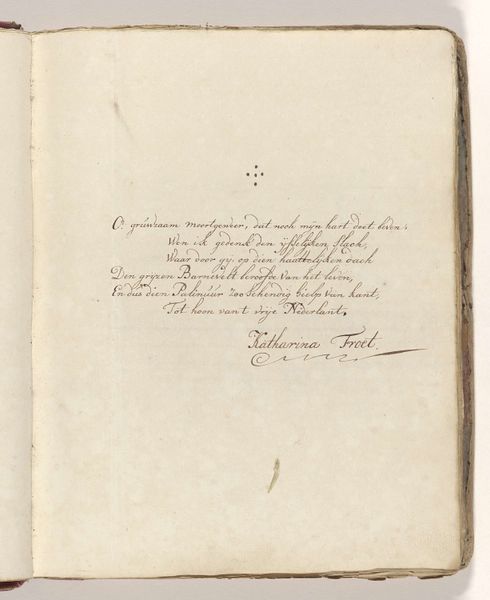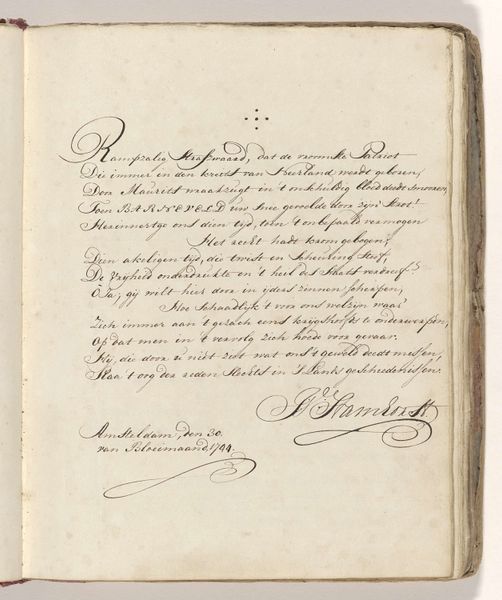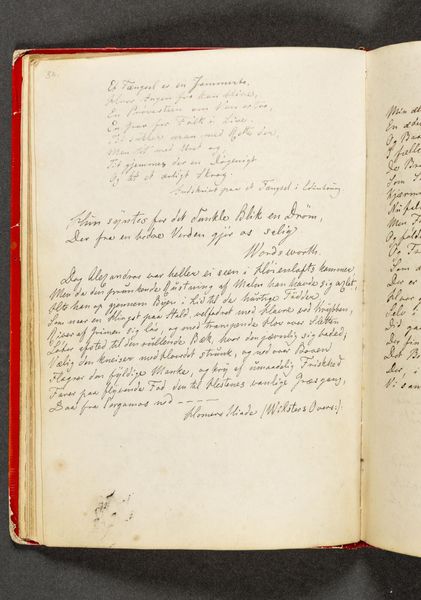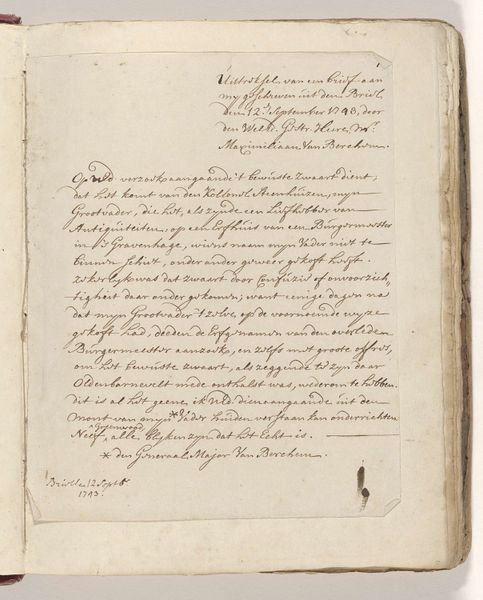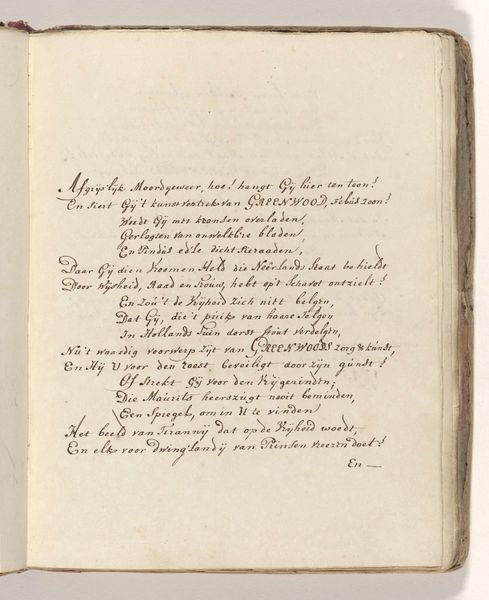
Gedicht op het zwaard waarmee Johan van Oldenbarnevelt in 1619 zou zijn onthoofd 1743
0:00
0:00
drawing, paper, ink
#
portrait
#
drawing
#
aged paper
#
toned paper
#
narrative-art
#
dutch-golden-age
#
hand drawn type
#
paper
#
personal sketchbook
#
ink
#
ink colored
#
sketchbook drawing
#
watercolour bleed
#
watercolour illustration
#
sketchbook art
#
watercolor
#
calligraphy
Dimensions: height 275 mm, width 220 mm
Copyright: Rijks Museum: Open Domain
Curator: Here we have a striking drawing by Dirk Smits, titled "Gedicht op het zwaard waarmee Johan van Oldenbarnevelt in 1619 zou zijn onthoofd," created in 1743. Editor: My immediate reaction is that of somber reflection. The aged paper and delicate script evoke a strong sense of history and melancholy. There's an almost fragile quality to the work. Curator: Absolutely. Smits has rendered a poem in ink, perhaps also watercolor, on what appears to be aged paper—the material itself speaking to the passage of time and historical weight of the subject matter: a poem about the sword used in a beheading. Editor: I'm struck by the balance between the visual form of the text and its content. The formal grace of the script juxtaposes the brutal event it commemorates. The artist seems aware of both aesthetics and the emotional weight of the event. Curator: I think the choice of materials plays a pivotal role here. Paper and ink were readily accessible tools, reflecting the broader social context of print and disseminating ideas—even subversive ones, perhaps reflecting on power, justice and perhaps even questioning the authority. Editor: Semiotically speaking, the sword as a symbol is rendered absent, yet it's the central 'character' alluded to throughout. Its power resides entirely in its implied presence, shaped by the carefully rendered verses that both mask and amplify its potency. Curator: Exactly! And while the text presents us with calligraphy, this isn’t merely decorative writing. The labor inscribe words memorializing historical trauma also becomes a way to comment on systems of control that produced it. Editor: So, we see the poem then not only a eulogy to a fallen figure, but a somber meditation of history and collective memory—or even indictment, depending on how one interprets it. Curator: Ultimately, the act of writing—of producing this artwork—serves as a tangible means to process, share and challenge established historical narratives through material production. Editor: Yes. On closer viewing, the integration of script and material lends it power beyond its representational content. The fragility echoes life’s ephemerality.
Comments
No comments
Be the first to comment and join the conversation on the ultimate creative platform.
